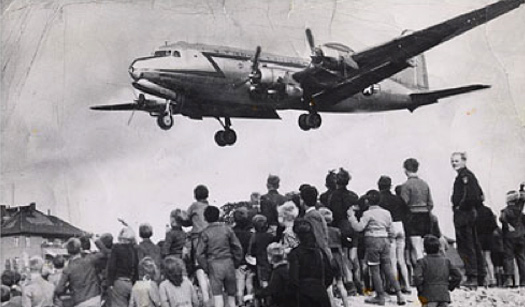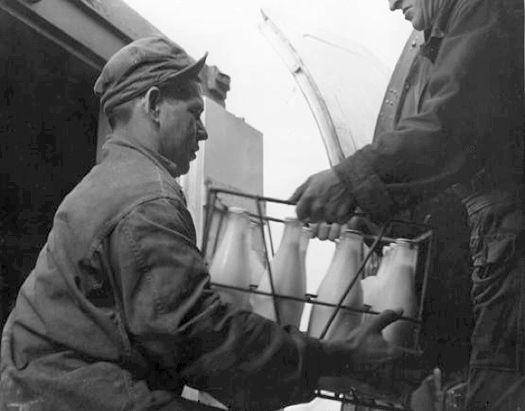 Source: Berlin airlift map, Wordpress
Source: Berlin airlift map, Wordpress
In response to the Soviet's Berlin Blockade, the Western allies, including the United States, supported the people of West Berlin by dropping supplies from the air to them. Within a year there were over 200,000 flights that provided 4700 tons of fuel and food to the people in western Berlin. The United States also called this mission, "Operation Vittles," referring to the food and supplies that were dropped to Berliners behind the Soviet blockade lines. In this way the United States was able to avoid a confrontation with the Soviets but was able to ensure that West Berlin did not become communist.
By the spring of 1949, it was clear that the Berlin Airlift was a success. On May 11, 1949, the Soviets lifted the blockade, and the Allies could once again enter West Berlin by land.
 Source: Berlin airlift map, Wordpress
Source: Berlin airlift map, Wordpress
In this photo citizens of West Berlin wait for supplies to be dropped from a US Air Force C-47 airplane.
 Source: 71-3984, Truman Library and Museum.
Source: 71-3984, Truman Library and Museum.
In this photo, supplies are being loaded onto a Berlin airlift airplane.